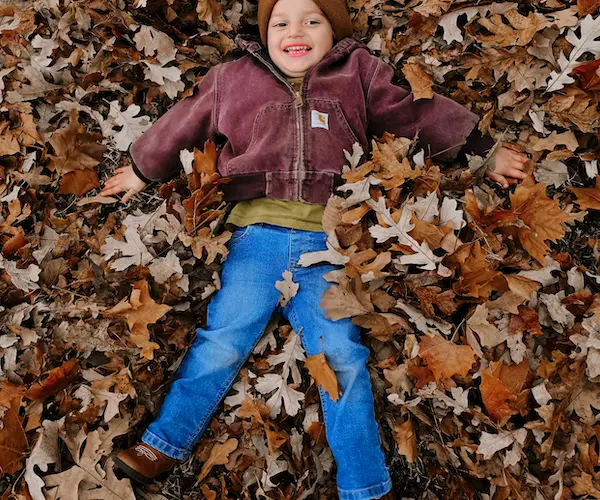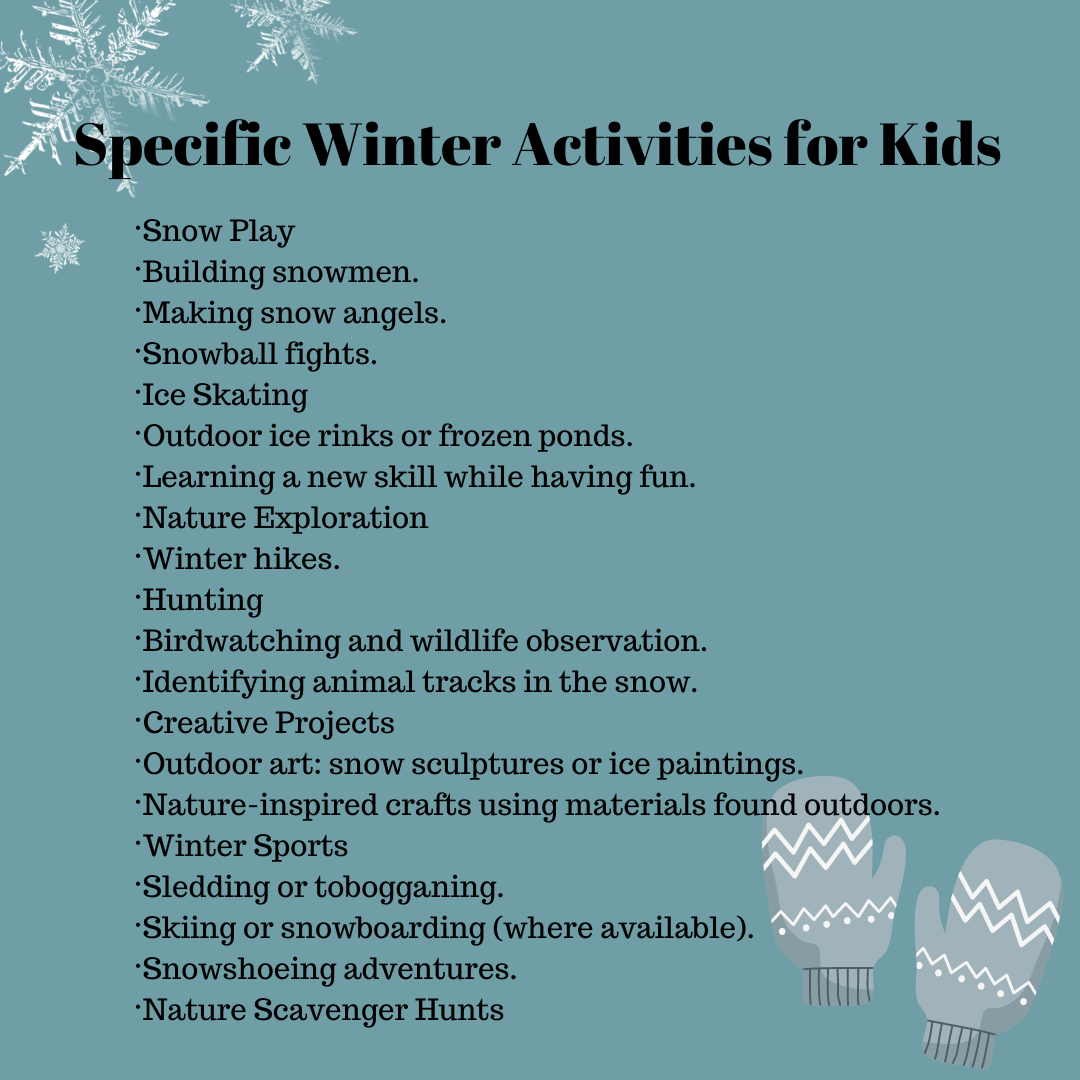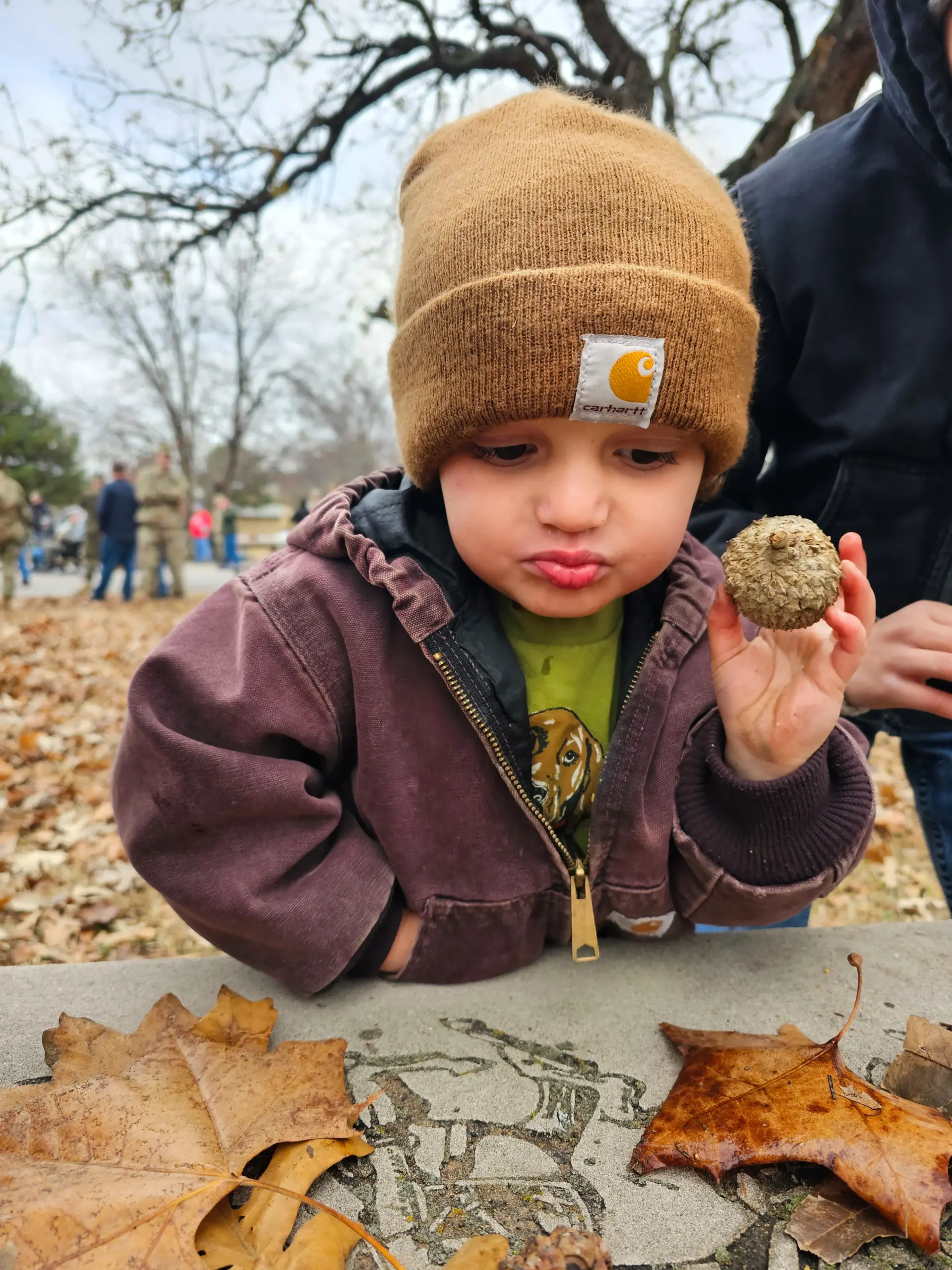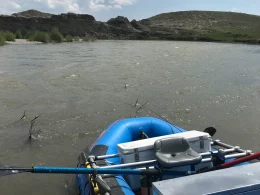Winter is here, and there’s an undeniable charm to this season. The crisp air carries with it a sense of magic, enticing us to cozy up indoors with a warm mug of cocoa and a crackling fire. There seems to be a reluctance to step outside into the winter wonderland that awaits, especially with kids. In today’s digitally driven age, where screens often dominate our attention, the importance of outdoor activities for children’s physical and mental well-being cannot be overstated.
While it may seem instinctual to hunker down indoors during the colder months, there’s a wealth of benefits to discover. From strengthening immune systems to fostering creativity and resilience, the winter season offers a playground for holistic development that simply cannot be replicated indoors.
Table of Contents
The 1000 Hours Outside Challenge
For several years, I have had my family participate in the 1000 Hours Outside Challenge. This challenge has guided many families towards a greater connection with the outdoor world by encouraging kids to spend more time outdoors. This initiative recognizes the transformative power of nature in shaping children’s development and well-being. By setting the goal of accumulating 1000 hours of outdoor time over the course of a year, the challenge inspires families to prioritize outdoor activities and adventures, fostering a deeper appreciation for the world beyond our doors. It also helps to remain accountable when those days come when you do not want to get out. Participating in the challenge not only reaps physical benefits such as improved health and fitness but also nurtures mental and emotional well-being by providing opportunities for exploration, creativity, and unstructured play. Winter plays a crucial role in this endeavor, offering its own set of unique experiences and adventures that contribute to the overall goal of the challenge. From building snow forts to hiking through frost-covered landscapes, embracing winter as part of the 1000 Hours Outside Challenge emphasizes the importance of year-round outdoor engagement in cultivating a lifelong love for nature. For people who live in places with harsher winters, there are separate challenges with smaller amounts of time spent daily in the winter months. The same challenge has been created for areas with harsh summers, requiring more time spent outdoors in the winter months. You can find numerous printable trackers online to help display your family’s progress.
Benefits of Winter Outdoor Activities
There are physical health benefits that come from exposure to the colder temperatures. Winter outdoor activities expose the body to varying temperatures and weather conditions, which can help strengthen the child’s immune system. Exposure to cold air prompts the body to produce more white blood cells, enhancing its ability to fight off infections and illnesses. By increasing regular outdoor activity in winter, you can develop the child’s immune response, reducing the likelihood of colds, flu, and other respiratory infections.
Despite the colder temperatures, spending time outdoors in winter still exposes the skin to sunlight, which is essential for vitamin D production. Most Americans are vitamin D deficient. Vitamin D plays a vital role in bone health, immune function, and mood regulation. By getting kids outside during the winter months, we can ensure adequate vitamin D levels, which may help prevent deficiencies and associated various health issues.
Engaging in outdoor activities during winter, such as skiing or even brisk walks, provides an excellent opportunity for cardiovascular exercise. Cold weather can stimulate the body to work harder to maintain core temperature, leading to increased heart rate and calories burned. Regular cardiovascular exercise strengthens the heart and improves circulation, reducing the risk of cardiovascular diseases. Setting the kids on the “right foot” for their health. Additionally, exercising in colder temperatures may enhance the body’s ability to burn fat, aiding in weight management and overall health. This can play a significant impact in the epidemic we have in America with childhood obesity.
There are countless mental health benefits that come from spending time outdoors. The benefits do not stop with the season change. Winter’s outdoor activities offer a potential cure for those combating Seasonal Affective Disorder (SAD) with the natural light and fresh air. Just being outdoors works wonders in lifting moods and reducing stress levels. Engaging in outdoor pursuits during winter fosters resilience and adaptability in children. Navigating through snowy terrain and braving the elements instills a sense of confidence and resourcefulness, preparing them to face future challenges. Being active in the outdoors, children develop a deeper understanding of their own inner strength, equipping them with invaluable coping skills that extend far beyond the season.
Overcoming Winter Challenges
Staying warm and dry is most of the battle! Dressing appropriately for winter weather is key to ensuring a comfortable and enjoyable outdoor experience. Layering techniques serve as the foundation for warmth, allowing children to easily adjust their clothing as temperatures fluctuate throughout the day. Starting with “long-johns” base layers, followed by insulating mid-layers, and topped off with a waterproof and windproof outer shell, provides optimal protection against the elements. Don’t forget to stock up on essential items like gloves, hats, and scarves, ensuring that children stay dry and cozy during their outdoor adventures. Proper footwear is equally essential, with insulated and waterproof boots providing traction and warmth in snowy and icy conditions.
While winter outdoor activities offer countless opportunities for fun and exploration, it’s crucial to prioritize safety to prevent cold-related injuries. Awareness of frostbite and hypothermia is paramount, with parents and caregivers educating children on the signs and symptoms of these conditions and emphasizing the importance of seeking shelter and warmth at the first signs of discomfort. Setting time limits for outdoor play helps prevent overexposure to cold temperatures. Short playtimes of up to 30 minutes work well for my household when temperatures are very low, and I extend them as they begin to rise. Supervision and guidance for younger children attempting harder activities, with adults closely monitoring their activities and intervening as needed to prevent accidents and ensure their well-being. Kids need to test their physical limits. I allow my kids to try, fail, and try again. By equipping children with the knowledge and tools to stay safe in winter conditions, parents and caregivers empower them to challenge themselves while minimizing risks in the long run.
Encouraging Winter Outdoor Time
Encouraging children to participate in winter outdoor activities begins with leading by example, with parents and caregivers serving as role models. We need to demonstrate enthusiasm for outdoor adventures and actively participate in winter activities alongside our children; adults instill a love of nature and a sense of adventure that transcends seasons. Family outings and winter traditions further reinforce the importance of outdoor time, creating cherished memories and strengthening family bonds.
Creating outdoor spaces tailored to winter play enhances children’s access to nature and encourages regular outdoor engagement. I have talked about this before when mentioning that I wanted to create a “backyard oasis.” Backyard play areas equipped with snow-friendly toys and structures provide a convenient and safe space for children to explore, play, and exercise their creativity. You do not have to go far to have fun! Community parks with winter amenities such as ice rinks, sledding hills, and or hiking trails offer additional opportunities for outdoor fun and socialization, fostering a sense of community and connection among family and friends.
As we reflect on the benefits of children being outside in winter, it becomes clear that the season offers countless opportunities for physical, mental, and emotional growth. From boosting immune systems to fostering resilience and creativity, the winter landscape serves as a playground for exploration and discovery. Embracing the season and participating in initiatives such as the 1000 Hours Outside Challenge not only encourages children to spend more time outdoors but also cultivates a deeper connection with nature that extends throughout the year.












